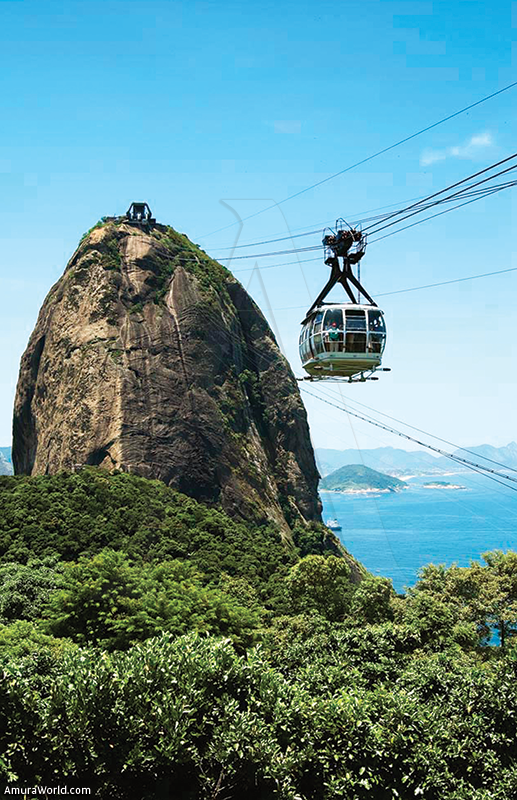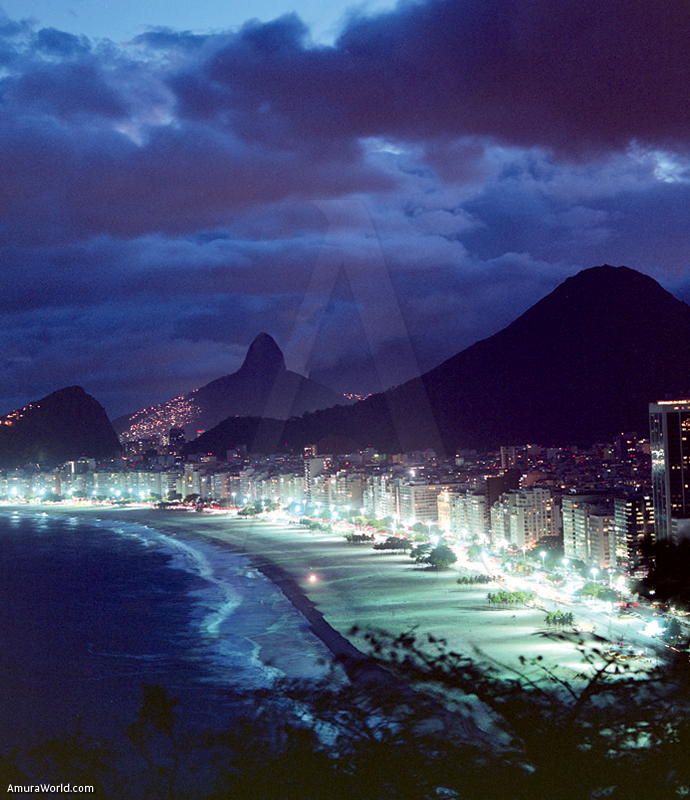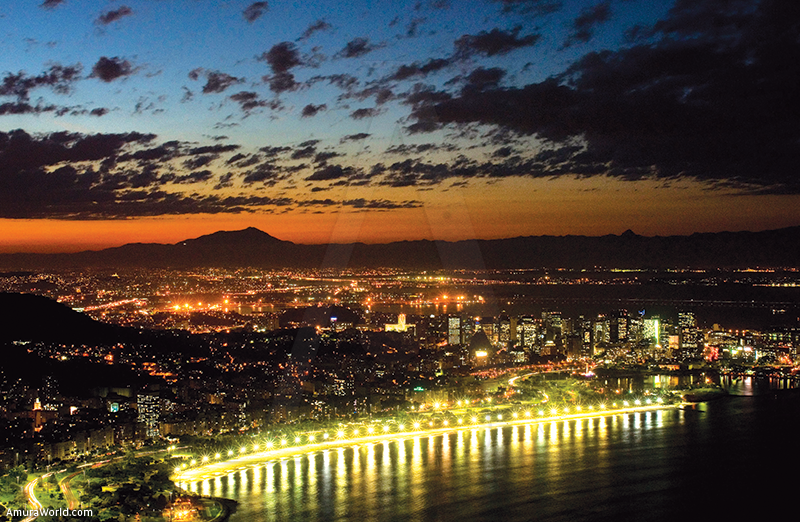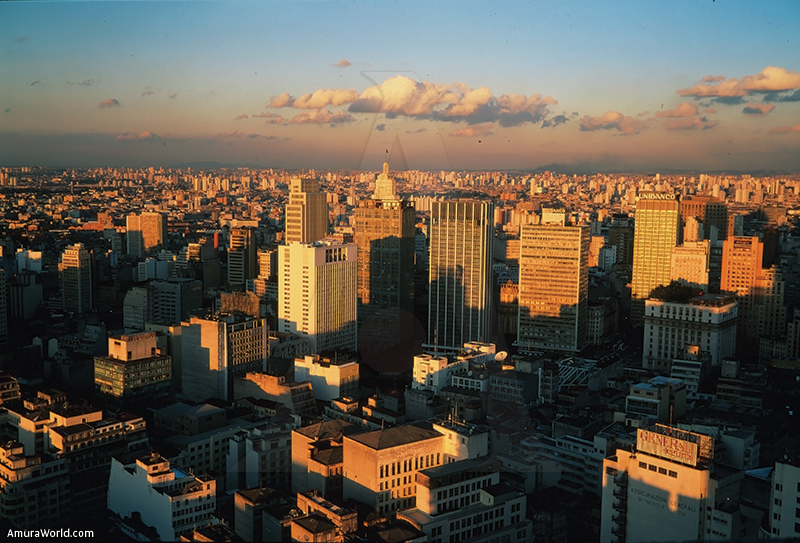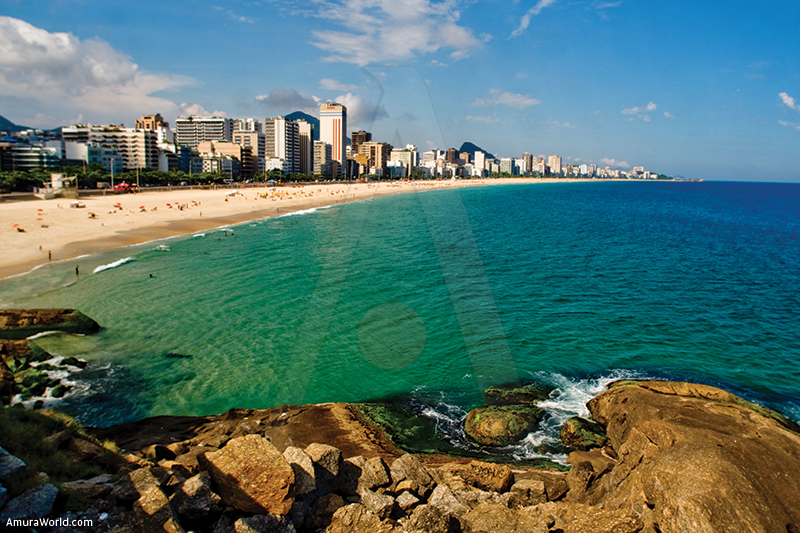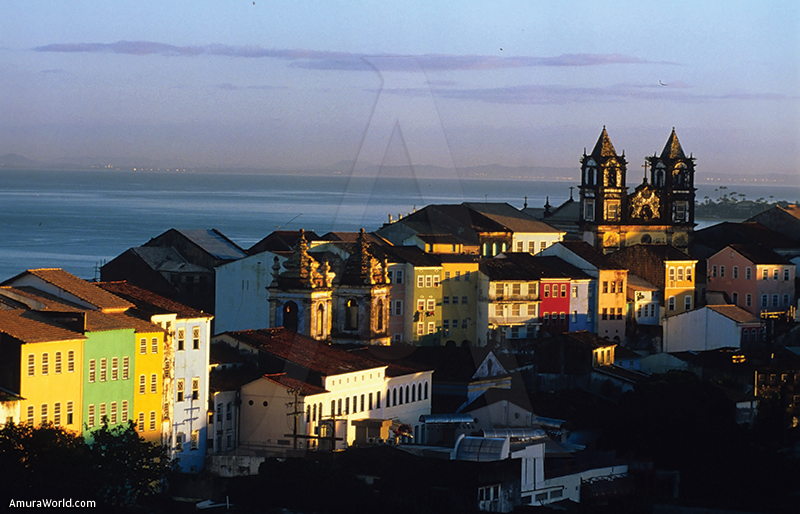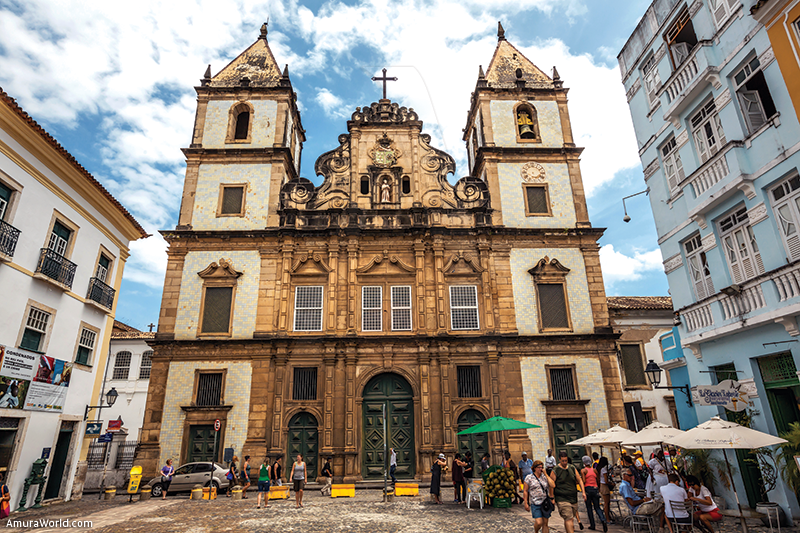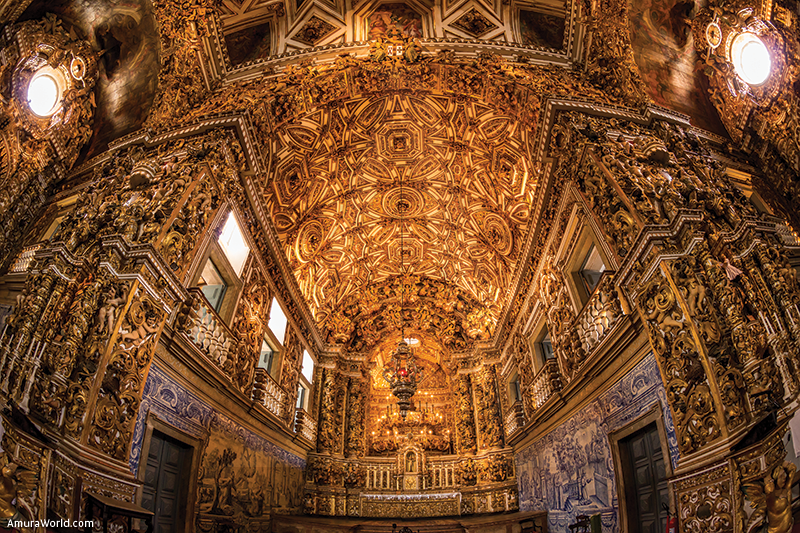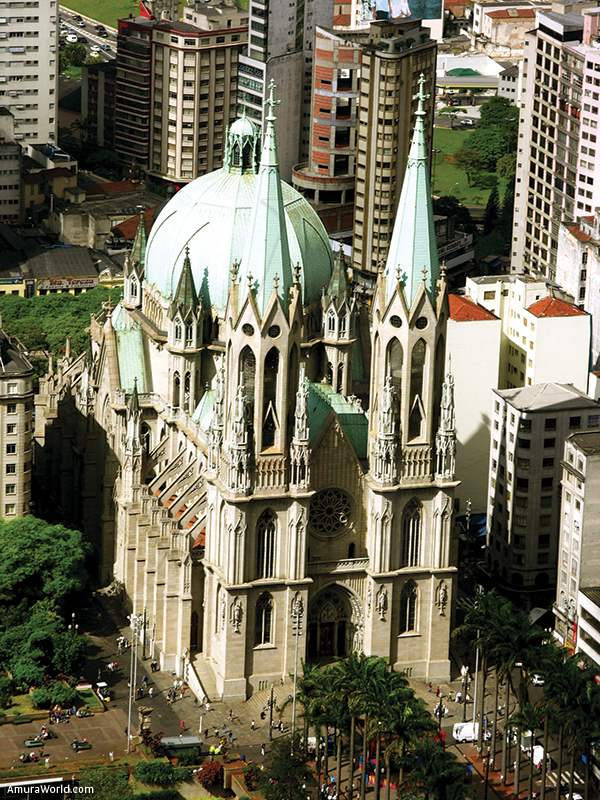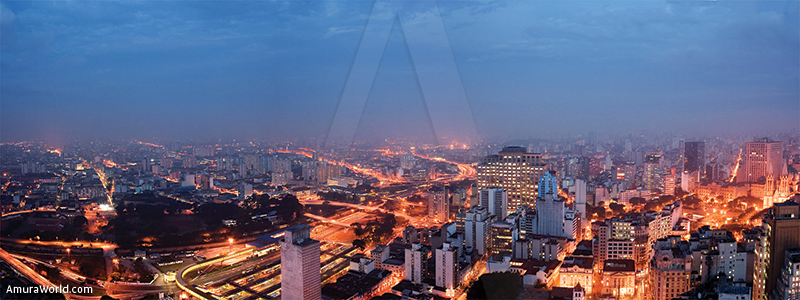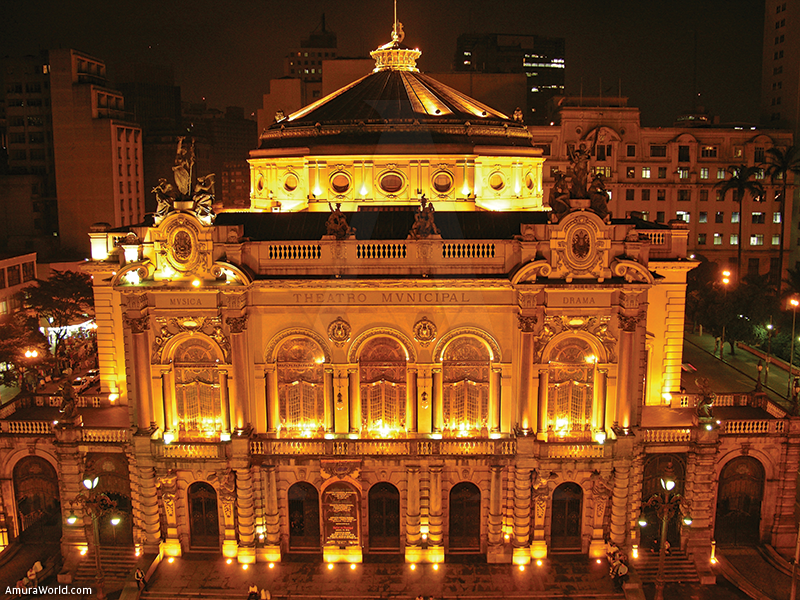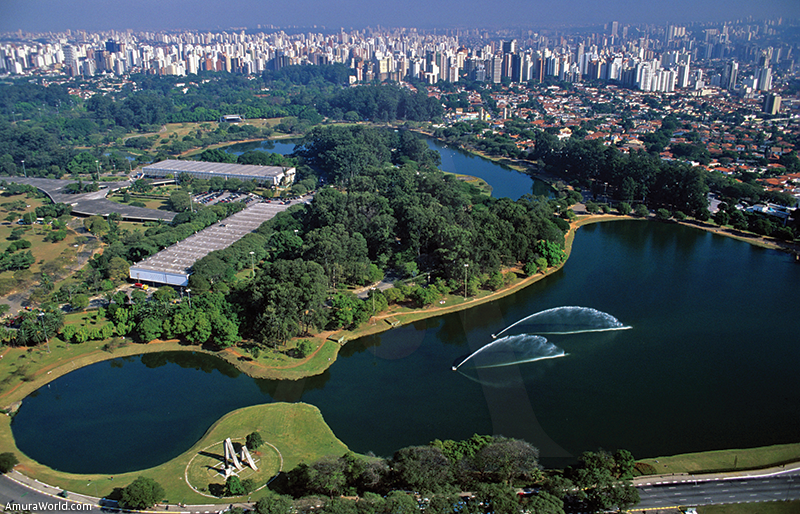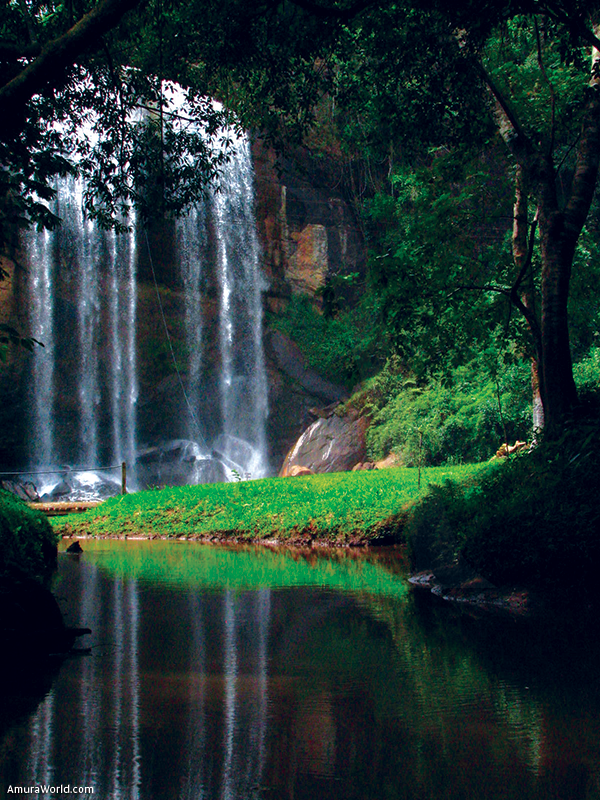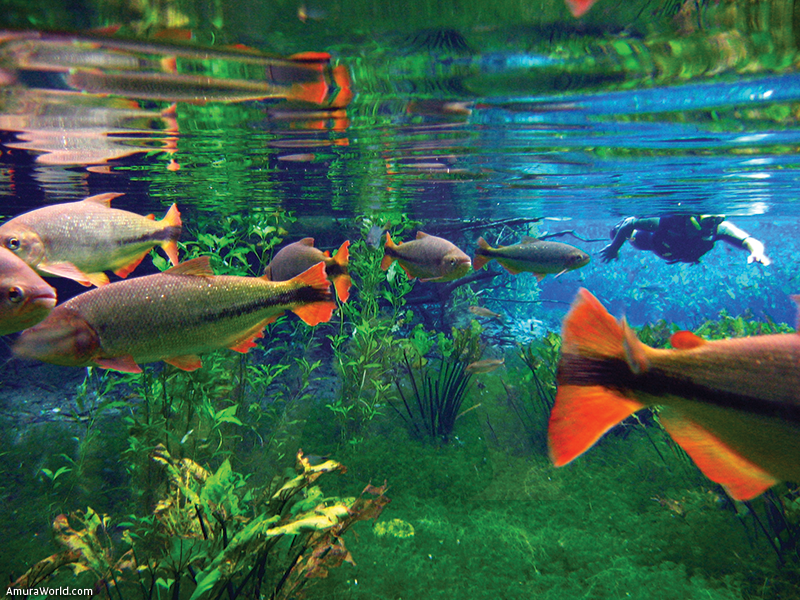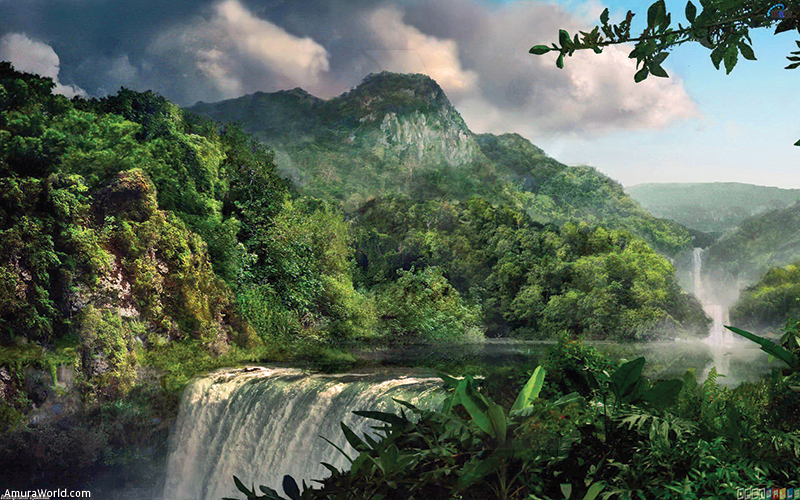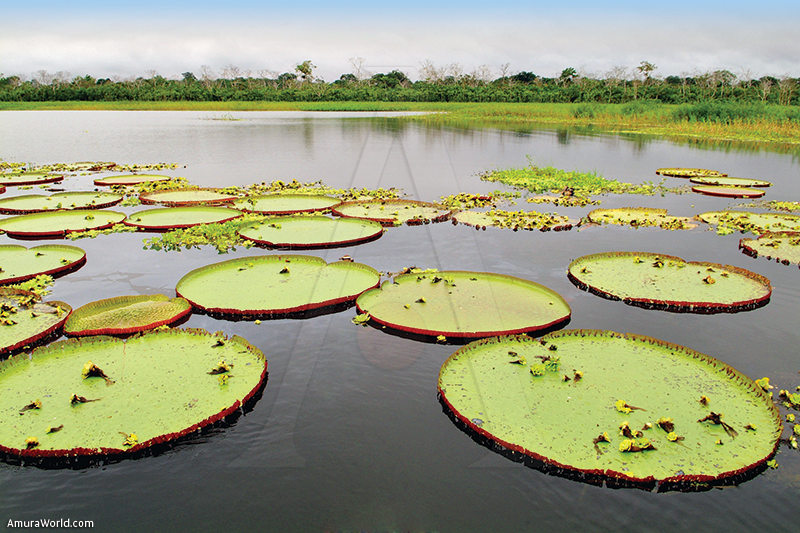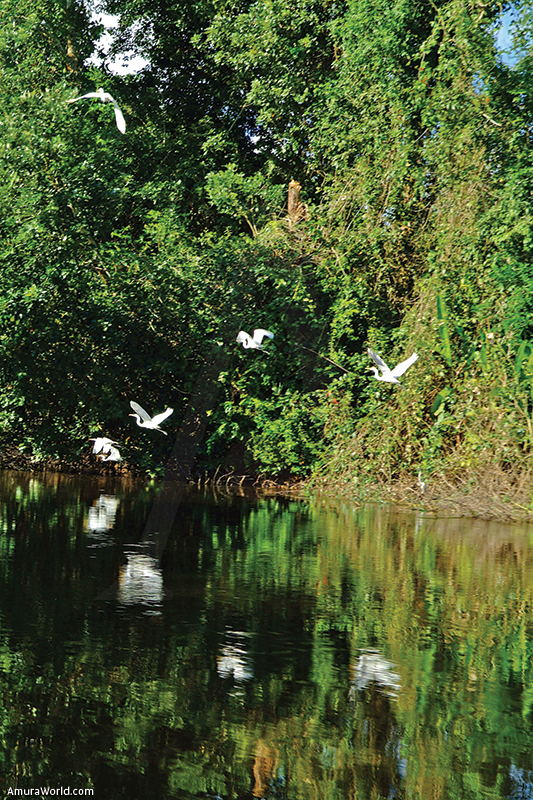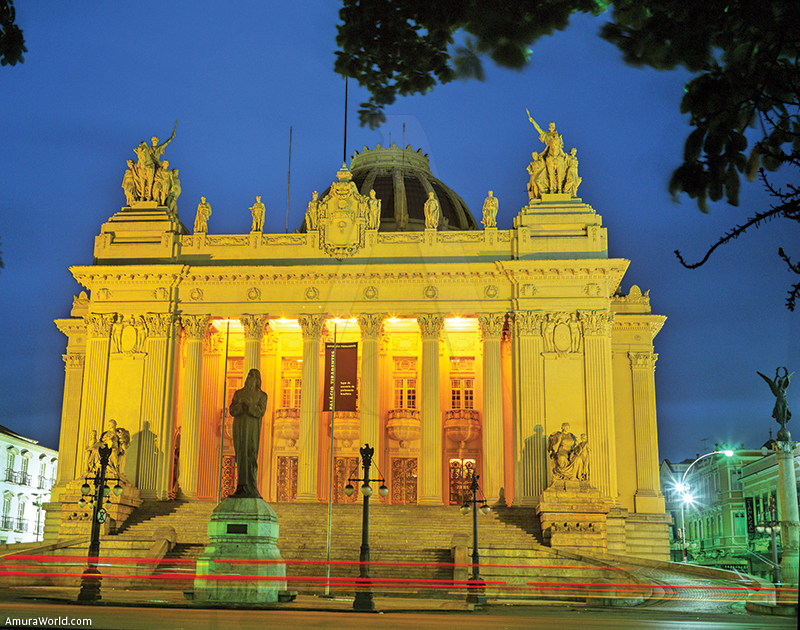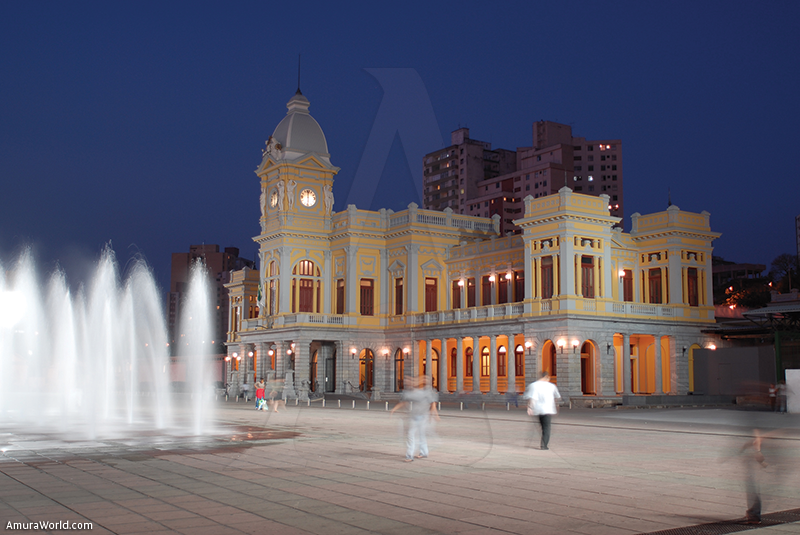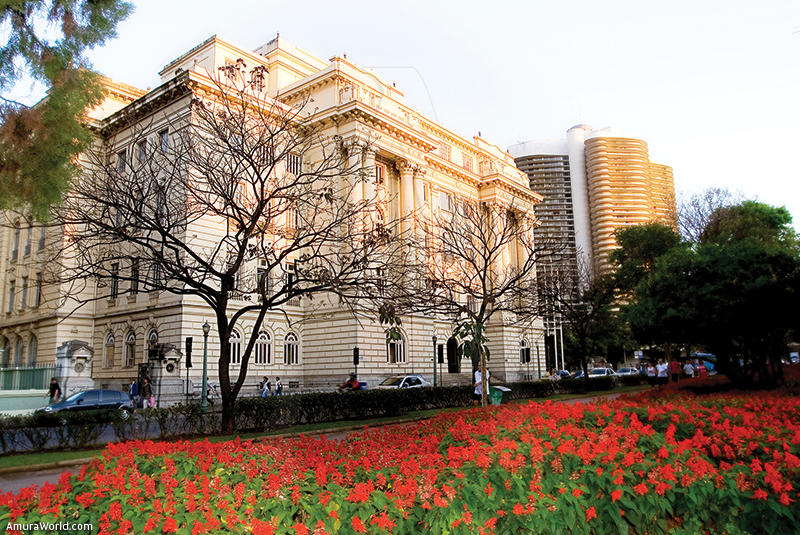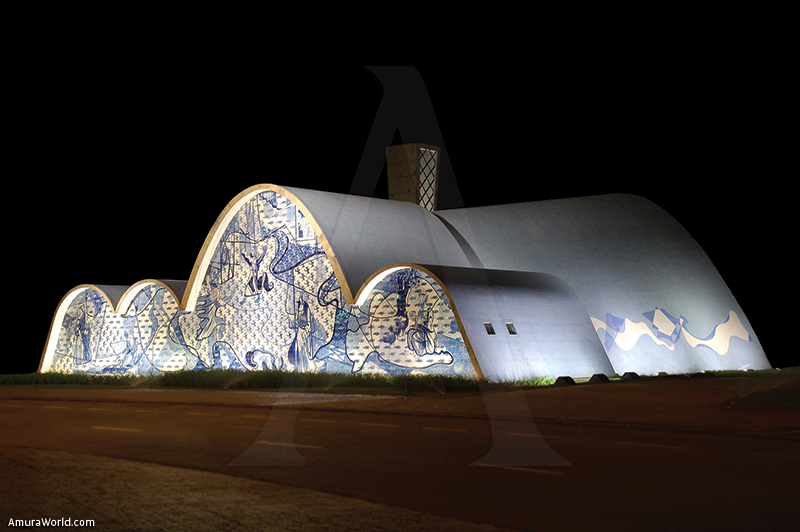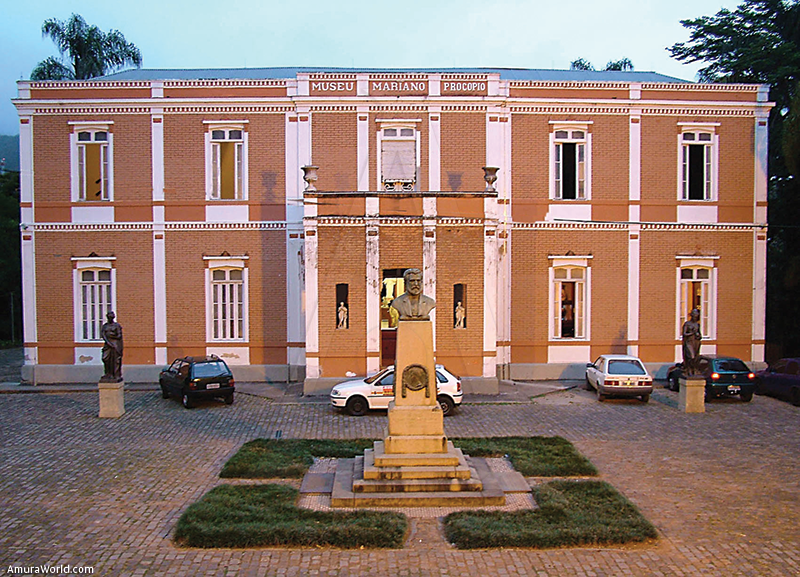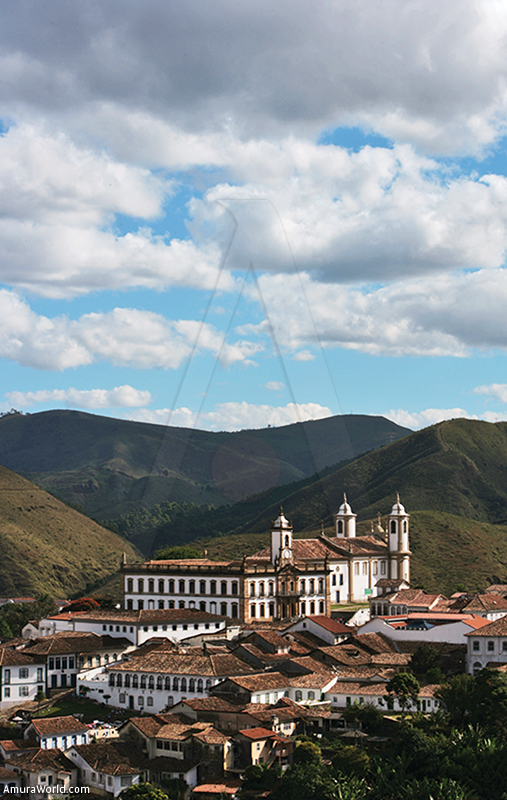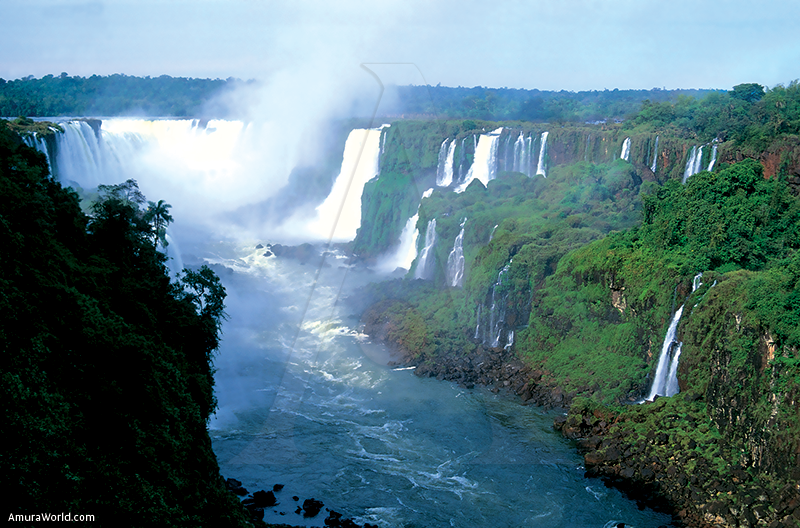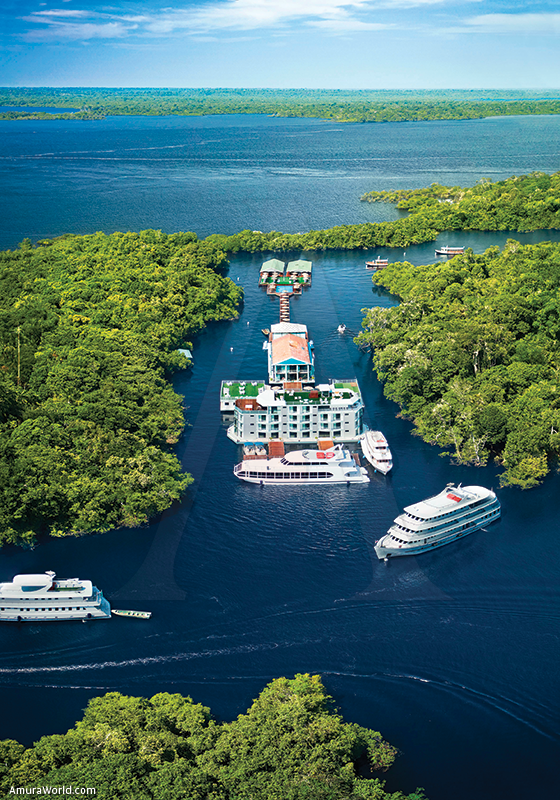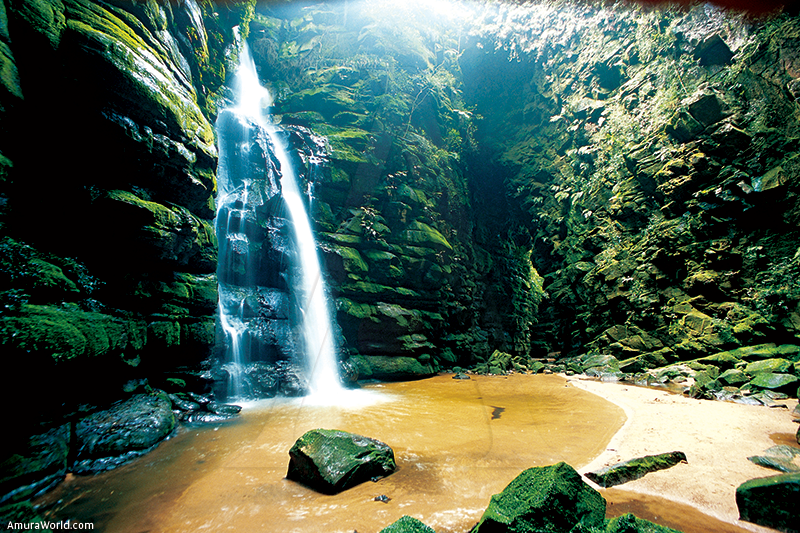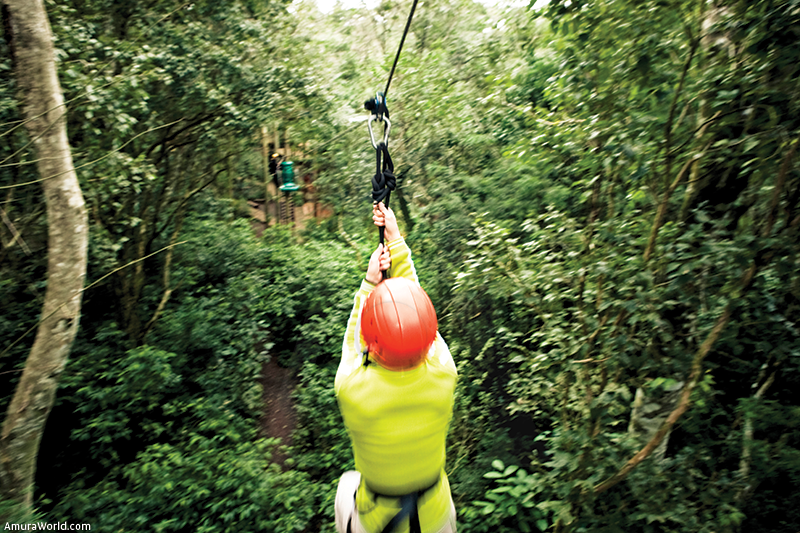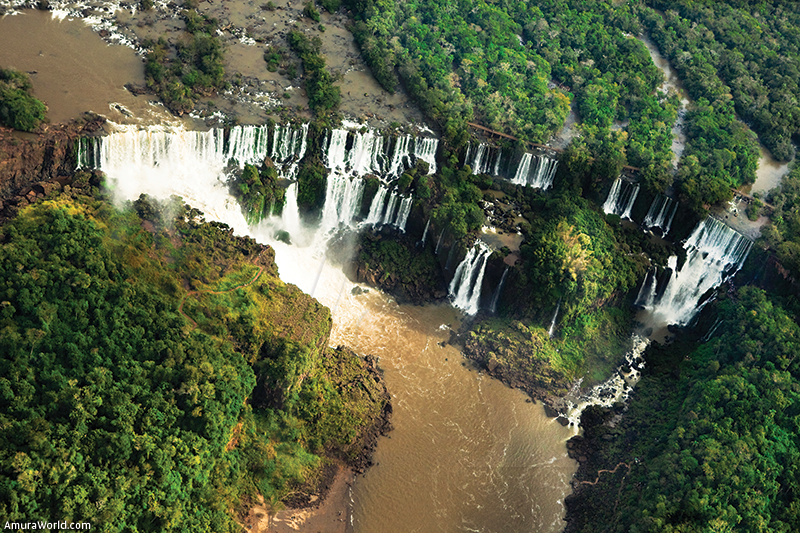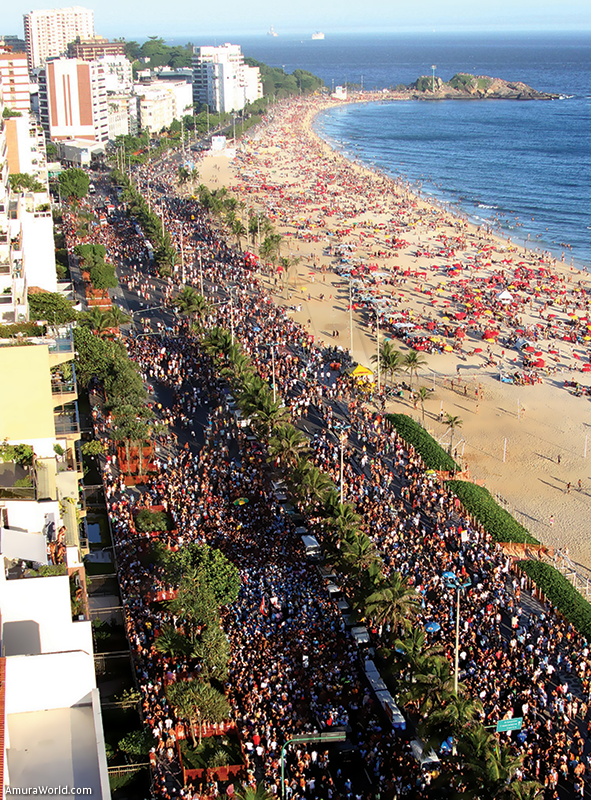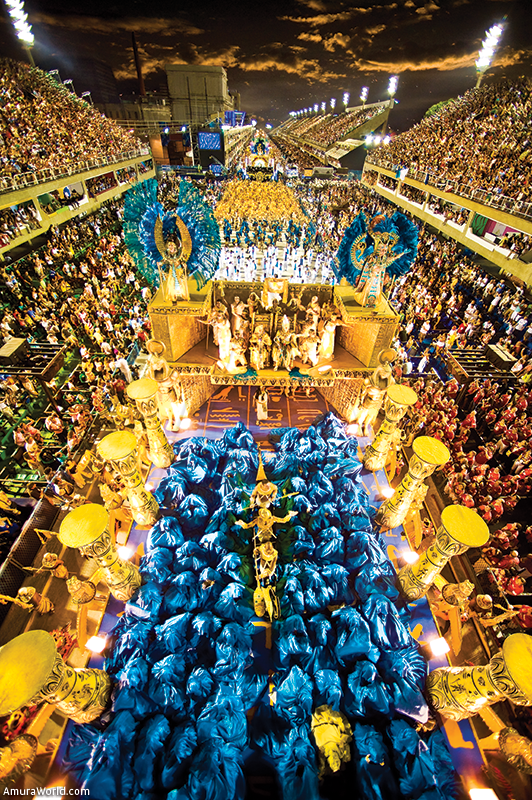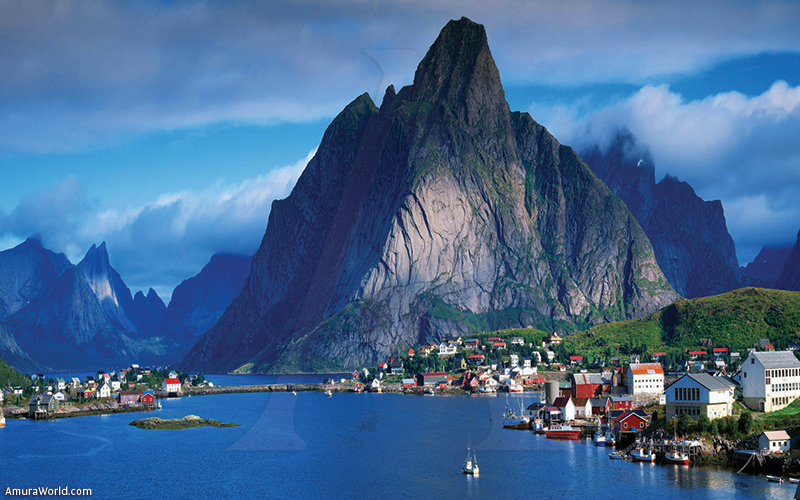More than samba and carnaval
It is a country with the size of a continent, with people as diverse as its land. Brazil begins its history with a quest for gold, and in return gave unimaginable riches. In this country, everything can be transformed. Product of a mixture of different roots, emerges something innovative and unique, the Brazilian culture, created based on various people that made the demography of this South American country: Indians, Europeans, Africans, Asians, Arabs etc. as well as the wide range of events through which it has been expressed this amalgam of cultural expressions: music, painting, literature, cinema, architecture. As a result of an intense mixture between the ethnics, there was a peculiar cultural reality.
Since the discovery of Brazil until the mid-nineteenth and twentieth centuries, the distance between popular and scholarly culture was quite wide: the first was meant to be a true copy of the ideas and style of the Europeans, the second was formed by adapting cultures of different people that formed the Brazilian in a set of values, aesthetics and habits rejected and despised by the elite.
Much of the modernist aesthetic project was precisely to rescue the fields considered “noble” of culture (general arts, literature, music, etc..) And even daily habits, seeing it as a legitimate Brazilian culture. Among the many people who formed Brazil, Europeans were those who exerted the greatest influence on the formation of Brazilian culture, mainly of Portuguese origin. During 322 years that the country was a Portuguese colony, there was a transfer of the culture of the metropolis to the South American lands. Portuguese settlers arrived in greater numbers, already in that century Brazil was a Catholic country with Portuguese as the dominant language. According to some historians, centuries of domination from the Moura and other civilizations facilitated contact between Portuguese settlers and indigenous Brazilians, which did not prevent the native population to decrease due to the colonizing actions.
The first decades of colonization enabled rich fusion of the Europeans and the Indians, leading to the formation of elements such as Língua geral, which influenced the Portuguese spoken in Brazil, as well as various aspects of Indian culture inherited by the Brazilian civilization. In addition to the decrease of indigenous people, there was an intense mix, which contributed to the loss of many cultural aspects. The indigenous influence became stronger in certain regions of the country in which groups were able to maintain the greater distances from the Europeans who begun to populate areas, mainly the northern region of Brazil.
Cidade Maravilhosa
Brazilians call Rio “The marvelous city” and it certainly is one of the most beautiful urban spectacles in the world. Concentrated in a narrow strip between the sea and the mountains, it is home to nearly seven million residents. They are protected by the most iconic landmark of Rìo, Christ the Redeemer, located 709 meters above sea level. Walking the streets of Rio is to revive the history of Brazil. The old buildings of the city located downtown and other areas are the memories of the country’s best moments.
In January 1502, the second Portuguese expedition of exploration, led by Gaspar Lemos arrived in Guanabara Bay. He devised what he thought to be the mouth of a river, giving it the name of Rio de Janeiro (River of January) to the region. But only in 1565 Estacio de Sá founded the town, which he named São Sebastião do Rio de Janeiro, in honor of Sebastian, at that time King of Portugal.
During the Empire, the region experienced potential cycles and began to export sugar cane, gold and coffee. In 1763, Rio de Janeiro became the capital of the Empire.
In 1889, Marshal Deodoro da Fonseca led a group of army officers that overthrew the Emperor from office and took the power of the country. With the proclamation of the Republic in 1889, the capital of the Empire became the federal capital of Brazil.
In the early twentieth century, the wide streets and imposing buildings emerged in the city, mostly in fin-de-siècle French style. In 1920 he founded the country’s first university in Rio de Janeiro, which was named URJ (University Rio de Janeiro). After this period, many colleges and schools were founded regarding the culture and history of Rio, in order to save the memory and build an identity for the people of the state.
Rio de Janeiro remained the capital of Brazil until the inauguration of Brasilia in 1960. At that same time there were many of the greatest representatives, known worldwide, of Brazilian culture in the fields of literature, music and visual arts. Many of them, Tom Jobim, Oscar Niemeyer, Chico Buarque and many more are still remembered as Brazilian icons.
48 hours in Rio
Happy hour around the Largo dos Teles-at any time of the week-is a tradition of the city’s downtown. It doesn’t matter if it’s Monday or Friday, you will always find tables along streets of Rua do Ouvidor, Rua do Mercado and Largo do Teles.
It’s what the Cariocas do to relax after a day’s work: enjoy a cold beer, typically accompanied by snacks. Here you can chat and enjoy the company of friends, the weather of the city is perfect for outdoor activities, one of the most animated spots of the Historic, Cultural and Gastronomic poles from Praça Quinze.
With sweeping views from the north to the south, the city of Rio de Janeiro invites residents and tourists to the practice of outdoor exercises. Frescobol is a traditional sport, created at Copacabana beach in the 50s; it became one of the recreational activities practiced by Cariocas on sunny summer and winter days.
The streets of Copacabana are great for cycling at night or late afternoons. The beach is perfect for volleyball matches or futvoley, which has football features-the player may touch the ball with any part of the body, forearms and hands-. Another example is the practice of kite surfing in the Rodrigo de Freitas Lagoon, with a privileged view of Christ the Redeemer, the back ground is the mountains of the Floresta da Tijuca and Pedra da Gávea.
Known for stone of the same name we find the small Arpoador beach, which is about 500 meters long and is located between Copacabana Fort and the beach of Ipanema, it offers one of the most stunning views of Rio: the sun set behind the mountain of Dois Irmãos, with the beaches of Ipanema and Leblon as a setting. Such an unforgettable moment is an everyday thing for all of those who frequent the south. From October to February, it is common to see Cariocas leave work and go straight to the beach, just to applaud this show of nature.
Much of the history of Brazil remains alive in Rio de Janeiro. Beautiful buildings of the nineteenth and twentieth harbor museums, churches and cultural centers recompose the city’s history and culture. A variety of spaces offer temporary exhibitions, film screenings as well as presentations of music, theater and dance.
The Museum of Modern Art is a milestone in Brazilian architecture. The traces of the architect Affonso Eduardo Reidy and the landscaping of Roberto Burle Marx resulted in one of the most famous cultural centers of Rio de Janeiro. Large national and international exhibitions take place in the museum opened in 1958 and reactivated in 1990.Among the churches and religious spaces, the Metropolitan Cathedral, which opened in 1979, is known for the grandeur and modern architectural design in a conic shape. The cathedral is 75 meters high, 106 meters, with capacity for 20 000 people standing. Inside, the stained glass windows dazzle all visitors.
Fiscal Island is another scenario in the anthology of Rio de Janeiro. This place was a customs post until 1913 and became famous for hosting the last dance of the Empire, in November 1889, in the palace of the island. The construction, which refers to a neo-Gothic castle, is open to visitors. Access is made by boat, which can be taken in the Cultural Space of the Navy, in downtown Rio.
A must for lovers of contemporary art is a building served as the headquarters and branch of Banco do Brasil until 1989, it is now renovated and houses one of the artistic and cultural spaces in vogue in the city. Located on Avenida Presidente Vargas, near the famous Church of the Candelaria, the cultural center has a library, cinema, theater, shop, tea room and restaurant, along with the spaces dedicated to temporary exhibitions.
Ela é Carioca
Carioca means “white man’s house” and despite popular thought, not all Brazilians are Carioca, to obtain the adjective you must be a native of Rio de Janeiro. However, make no mistake, for those born in this state are called fluminenses, so that all Cariocas are fluminenses but not all fluminenses are Cariocas. Known for their sense of humor, attitude and cosmopolitan status, natives of Rio are themselves a statement. The Carioca cuisine is rich, exotic and varied. You may feel like part of the community the day you discover the “caipirinha” and “feijoada”.
Cariocas, regardless of their economic or social status, cannot put aside auto racing, football and fashion, which are activities and disciplines they live by and contribute to the physical part, idiosyncrasy and Brazilian spirit.
The true Carioca is not born in Rio, but he who gives life, enjoys and shares the essence of the “Marvelous City”.
São Paulo
This rich city is known worldwide as the capital of business tourism in Brazil, reaching up to concentrate 70% of the national movement in this segment. However, its giant structure is not only in the economic aspect, it reached the title of the most important commercial and financial area in Latin America. São Paulo is Brazil’s largest infrastructure in politics and culture. There are nine million visitors each year to attend trade shows, conferences and exhibitions, generating revenues of up to 5 million dollars to the city. To get an idea, São Paulo, is responsible for the celebration of the most important fairs held in the country.
Many of its monuments have an enormous influence on the history of the country, as the Latin American Memorial, the Botanical Garden, the Ibirapuera Park and the Art Museum of São Paulo. The Municipal Theatre of São Paulo organized no less than the Modern Art Week in 1922, an event that gave a new direction for art in Brazil; it would open the door to modernity. Today it houses events such as the International Art Biennial, the Formula 1 Grand Prix and São Paulo Fashion Week. This land of drizzle is considered by many the best nightlife in the country, with all kinds of fun and entertainment. In 1997, it received the title of “Gourmet Capital of the World, among the 43 countries that competed in the 10th International Congress of Gastronomy, Hospitality and Tourism. The history of São Paulo begins with the captaincy of São Vicente, which was the result of a donation made on September 28, 1532 by the King of Portugal, D. João III.
The origin of São Paulo Piratininga. Initially, the use of this region was focused on the subsistence of agriculture, using slave labor from local natives, trying to implement and expand the cultivation of sugarcane. Nevertheless, at that time, a more lucrative business was being initiated, the trade of precious metals. This was the second half of the century that begins the journey to the interior, with a mission to imprison Indians and find this raw material, which was much desired.
As a result, São Paulo is maintained throughout the XVIII century, almost with a single function, the starting point for the expansion of the territory of Brazil, South and Northeast. Regarding the language, until the mid-eighteenth century, the tongue that prevailed was the “general language” Basic Tupi-Guarani, which lasted until the onset of the Union of the Iberian Crowns between 1580 and 1640.
It was estimated that Spanish was prevalent. In 1822, with the independence, the Indians had played an important part in the colonized regions, African being about 25% of the population, and the Mulatto with 40%, were concentrated in large quantities, especially in the sugar cane fields. At the time of the XVIII through the XIX century, coffee plantations began to take the place of sugar cane, right there, São Paulo give an “economic downturn.” In September 1922, the heir to the throne Prince Don Pedro declared it’s independence, giving more importance to São Paulo, which had experienced a considerable increase in the number of coffee plantations. Crop cultivation was in the north of the province, the perfect purple soil for fruit production. This culture was however, responsible for the expansion and multiplication of railways.
Mato Grosso Do Sul:
Known for its biodiversity, Mato Grosso do Sul is a major eco-tourism attraction, especially in the southern Pantanal region. Recognized by UNESCO as a World Natural Heritage Site and Biosphere Reserve, the Pantanal is a plain that undergoes periodic flooding and is one of the most diversified nature reserves on the planet. The Pantanal is Corumbá ´s main city, sport fishing is the
main activity.
Drafty Route riding, which includes the municipalities of Aquidauna, Corumbá and Miranda, offers a walk through some of the most beautiful landscapes of the Pantanal. The trip is made in seven or eight days riding and passing three inns, each with different attractions, but all with a good infrastructure, such as apartments with air conditioning, pool, horses, and regional cuisine. The ongoing work of erosion has given the current form of the Sierra de Bodoquena, where the town of Bonito is situated. Here, immense caverns were formed.
The state capital, Campo Grande, is characterized by the diversity of customs, music and food, and reflects the unique cultural characteristics due to the legacy left by the Indians and Europeans, Japanese, Paraguay, Bolivia and migrants from other states.
Bonito, located at 260 km, Campo Grande, capital of Mato Grosso do Sul, and place of exquisite beauty, hence its name, has many caves, caverns, springs, natural aquariums, waterfalls, lakes and archeological sites. One of the most known is the Gruta del Lago Azul, which is 126 meters deep, located in the Fazenda Anhumas. The cave, discovered by Terena Indians in 1924, provides a unique morning. Between 7.30am and 9.30am, the sun’s rays fill the cave and are reflected in the water, turning it blue and causing formation of steam that the air transforms in the colors of the rainbow. Cave stalactites are also reflected in the waters of the lake, creating a mirror image.
Lago Azul is a prehistoric site where Brazilian and French divers discovered animal fossils of 10 million years ago, among them a giant sloth. The Bahia Bonita Aquarium is one of the landmarks of the region, located 7 kilometerss from the city, it is formed by the spring waters of Formoso River, with exotic plants and fish stock of different colors.
Corumbá, river port on the right bank of the Paraguay River, located at the border with Bolivia, is one of the largest cities in Mato Grosso do Sul and one of the main starting points to the Pantanal. Its name comes from the Tupi-Guarani and means distant location, the city is in the far west of Brazil and access to it for a long time became almost exclusive through the Paraguay River, it currently can be accessed in different forms of transportation in addition, through a ship. Corumbá retains secular churches and architectural monuments, among which the Casario do Porto Geral can be found, built in the nineteenth century, and the Telegraph Office, built on stilts in the early twentieth century. Besides these monuments and excursions in the Pantanal, in the region the Forte Coimbra, Porto Esperança, Urucum Mines and Porto da Manga are located.
The Pantanal of Mato Grosso, with an area of 250,000 km2, is the world’s largest floodplain. The Pantanal is a vast intercontinental basin, bounded by the Planalto Brasileiro, to the east by the Chapadas Matogrossenses, To the north a chain of mountains and highlands, and to the west the skirt of the Andes. In some ways it is a large internal delta, where water accumulates, along with the Upper Paraguay and a large number of rivers that descend from the Planalto. Across the Paraguay River, the Pantanal is closely linked to the large Parana River Basin Plate. However, to the north of the Pantanal, water diffuses connections with the Amazonian tributaries, especially river Guapore. The drainage of this internal delta, through the narrow and smooth closure bar of los Morros do Sul, happends with great difficulty. However, huge amounts of water behind this damp makes the Pantanal water maze stop it´s unpredictable currents, in temporary or permanent manner. In Indian legends and early maps, the Pantanal is remembered as a great lake full of islands, the “Dos Xaraiés Ocean.
The aquatic vegetation is essential for life to occure in the Pantanal. Floating plants are the main primary producers in its waters. Carried by rivers, these plants are floating islands, the water hyacinths.
The geological past has allowed the Pantanal to comprise as the largest intersection trade of aquatic flora and fauna of South America. They function as regulator predators by eating fish and sometimes as important agents of nutrient cycling as well. In places where there are many alligators few piranhas exists. When alligators are decimated by indiscriminate hunting of fur traders, the aggressive piranha population increases. Snakes are rare in the Pantanal, mainly in flood areas, although there are water snakes.
The birds of the Pantanal are one of the biggest attractions of the place, gathered in huge concentrations, they exploit aquatic food resources. You may acompany birds at dusk or dawn to its resting place on the banks of the rivers where they spend the night, it’s a magnificent spectacle, you can also find other species, like deer and other mammals, as the tapir, paca, maned wolf, primates, the macaques, wild pigs, panthers, and other cats who are attracted by the abundance of prey. Due to its variety, Pantanal has become one of the most interesting and beautiful places in the world for extraordinary “photographic safaris”. (Highly recommended for lovers of nature and the environment).
Espírito Santo:
Originally called Capixaba,it was formed by the mixture of various people and races: Indians, blacks, Italians, Germans, among others. It is an important state and acts as a hub port infrastructure of communications for the rest of Brazil and other international markets.
This state is the third largest producer of coffee in the country, the largest Brazilian producer and exporter of papaya, flax textile production, and is the first world’s first producer of cellulose.
Occupying a long narrow strip between the sea and the mountains, Espírito Santo has great tourism potential, with beaches for all tastes, ancient buildings and historical frameworks of colonization. Its capital, Vitória, founded in 1551, is an island and is the second oldest city in the state. The first is Vila Velha, founded in 1534 by the Portuguese Vasco Fernandes. The Indian hostility forced the settlers to move from Ilha Velha (the opposite island). In the dispute with the Indians for the possession of land, the Portuguese gave the new settlement the name of Vitória. The two cities thrived and currently live in harmony, separated by a 4.8 km bridge. Trimmed by inlets, Vitória has five beaches and is the largest island in an archipelago of 33 islands. The pieces of land are connected by bridges.
The extraordinary beaches of the south of Vitória (only the capital is an island, the rest of the state is on the mainland), add up 113 km , among which Setiba, Três Praias, Itaoca, Marataízes y Guarapari are found, which are the most famous of Espírito Santo. The sand of these beaches is considered medicinal; it is very popular amongst the tourists and locals.
The tour to take is to the small fishing village of Nova Almeida, located 30 kms from the capital, it is recommended to visit the church of Reis Magos, a construction of the XVI century Jesuit National Historical Heritage.
· 12 kms of São Mateus is Guriri Island. Itaúnas, where nature is the star, with its sand dunes, which are 30 meters tall. The Itaúnas State Park holds a rich ecosystem, with marshes, shoals, rivers, lakes, beaches and lush vegetation. There is also one of the main bases of Tamar Project, a study center for sea turtles. From September to March, visitors are welcome to observe the nesting turtles.
· The mountainous region of Espírito Santo offers several tours of rural character for ecotourism. These are areas inhabited by descendants of Europeans, as seen in their celebrations and festivals such as: German immigration Festival (Sommerfest), the Strawberry Festival in Pedra Azul, and the Settler’s Festival in Santa Maria de Jetibá.
In the mountainous region Santa Teresa is located, 50 km from Vitória, land of the hummingbird and of naturalist Augusto Ruschi, who founded there the Museum Mello Leitão. In the midst of the city, live in the vegetation over 20 species of hummingbirds, plus thousands of animals and plants.
Santa Catarina:
The state of Santa Catarina has a land full of contrasts: the coastline is filled with beautiful beaches, bays, coves and dozens of islands. In architecture, several municipalities maintain their typical buildings from the time of colonization, in terms of the capital Florianopolis is a city of modern buildings and sophistications, marked by the strong presence of youth, sports and surf championships. Among the most important beaches are Bombinhas, which is considered the capital of the Brazilian diving and Balneario Camboriu, one of the most popular with the locals.
Summers are characterized by high temperatures, so the state’s most visited places are Itapema, Garopaba, Joaquina and Praia Mole Canasvieiras. When the harsh winter approaches, Sierra Santa Catarina is filled with heavy frosts - sometimes accompanied by snow – these events attract tourists from across the country. The most visited places in the mountains are Lages and São Joaquim. In the Valley of Itajaí - Blumenau direction - different destinations are concentrated on tourism business. In the municipality of Timbo, highlighting optimal locations for practicing extreme sports such as rafting, canyoning and vertical practices. Known as a piece of Europe in the middle of the south, the state of Santa Catarina has one of the highest rated development of Brazil, based on diversified production. Another great attraction is the Lighthouse of Santa Marta, the largest in Latin and third worldwide.
Minas Gerais:
Belo Horizonte-If we had to choose a phrase to define the capital of Minas Gerais, this would be it: a city in turmoil. The third largest city of Brazil and the fourth richest, Belo Horizonte represents the union of traditional and contemporary urbanization which is lost with the exuberant cosmopolitan nature and is full of hospitality.
Surrounded by the Sierra Corral, Belo Horizonte was the first planned city in modern Brazilian culture and its name really could not be more appropriate. From the top of the hills and mountains, everywhere you look, the views are breathtaking. And nature, always very generous with this region, offers to show a day like no other: a stunning sunset. The capital has dozens of well-kept parks, tree lined streets, beautiful parks and large gardens, which are haven for many species of fauna and flora and serve as a refuge for those seeking peace, health and wellness. The zeal for nature, the city has been recognized by the title of “garden city”. With inspiration from those who have been blessed with unspoiled beauty, Beagá ( as brazilians call it) breathes culture, art, cuisine and bohemian. Its cultural life gets hectic with all the styles of shows, exhibitions and festivals. Their dance groups, music and theater have crossed the mountains to gain the world. Accompanying all this excitement, the city offers numerous dining options.
Their traditional bars with chairs on the sidewalks are an irresistible invitation to meet friends, make small talk, meet people and experiment different types of appetizers that are delicious. Beagá is like a capital of the U.S. and bars for those who like a more casual and Latin bohemian make no better place to visit.
Juiz de Fora - Is a city of natural and cultural heritage. It has several museums and buildings that tell their story. The most visited, is the Museum Mariano Procopio, with a vast collection of the imperial era, it was the first to be assembled in Minas Gerais in 1922. It has more than 46 million pieces ranging from archaeological artifacts, botanical and zoological specimens. The site also houses the Museum Park, which features exotic animals, a walking track and complete infrastructure.
Other attractions of the destination to be visited are the Mascarenhas space and Credireal Railway Museum, parks and Horto Florestal Lajinha Pit Halfeld and D’tapirs.
Ouro Preto was the first city in Brazil and one of the first to be declared World Heritage by UNESCO, Ouro Preto reached that status in 1980. Famous for its exquisite colonial architecture, the city was built by slaves and artists at the peak of the Golden Cycle
Its historical value is the stage of the Conspiracy of Mines and a significant historical site aren’t the only attractions of the city, which also benefits from its cultural activities and the surrounding ecosystem rich with waterfalls, trails and a area of high bushes. Its imposing and silent churches contrast with the youthful and cheerful provided by the contagious movement of students and tourists, always ready to celebrate in its famous republic or city hillside.
Paraná
Iguazu Falls - one of the greatest natural spectacles on the planet - are some of the many tourist attractions, valued by many geographical, historical and cultural fanatics, which can be visited throughout the year in Paraná.
It is considered one of the states with complete tourist destinations in Brazil. The Iguazu - along with more than two hundred waterfalls - is the main state zipcode. In all regions of the state the structure and hotel service is excellent, especially in Foz do Iguaçu. Curitiba the modern capital is a sophisticated city, cosmopolitan, with a various historical circuit, cultural and gastronomic. Especially the architecture and cuisine which has a noticeable European influence, the legacy of Portuguese immigrants, Italians, Germans, Poles, Ukrainians and other peoples make the ethno-cultural mosaic of Paraná.
In addition to the ethnic variety, it has a wide variety of environments. On the coast there are some famous sanctuaries like Ilha do Mel, and Superagüi Guaraqueçaba National Park. In the region of Campos Gerais, is the Vila Velha State Park, with its giant stone sculptures, and barrel Guartelá, the sixth largest in the world. There other destinations, routes and tourism products and structured as Matinhos Caiobá and Guaratuba, as well as the historic towns of Paranaguá. The historic city of Lapa and the waterfalls Prudentópolis. Tropeiros, a cultural corridor that integrates sixteen cities, offers hotels and agricultural rural tourism programs. Paraná also has great spas, resorts, and adventure as well as tourist echo centers spread throughout the state. Paraná is synonymous of hospitality and tourism!
Rio Grande Do Sul
Rio Grande do Sul is one of the 27 federal units of Brazil. Located in the south, it limits with the state of Santa Catarina, in the north, the Atlantic Ocean to the east, Uruguay to the south, and Argentina to the west. Its capital is the city of Porto Alegre and other major cities are: Caxias do Sul, Pelotas, Canoas, Rio Grande and Santa Maria.
The state has a significant role in the history of Brazil, having been the site of the War of Tatters, which was the civil war for most of the country, and the longest armed conflict in the Americas. Its population is largely made up of the descendants of Indians, Portuguese, German, Italian, African and Asian. In certain regions of the state, such as Serra Gaucha and the southern half of the country, you can still hear the Italian and German dialects.
Much more than Carnival...
Festivals are one of the most iconic and identifying features of this nation, being impregnated with spontaneity and originality. The rituals are popular, the language of the people, all that comes from it and its soul. These stories of shared memories and emotions bind men in communities and make them even closer to their land.
Recently, many believed that the process of globalization ment the end of the unique cultural expressions and indemnificatory, including popular festivals. However, it is through dynamic cultural mechanisms and media that festivals manage to keep alive traditional rhythms and structures. In one hand, it relies on the ability to update itself constantly, not just incorporating elements of the time and place where they are held, but also from other contexts and nuances in the field of popular elements of dynamics with movement. On the other hand, festivals benefit and cause the saturation of the market in the demonstrations, offering the public private labels of a community. Thus, at the beginning of the century, it verifies the strength of the festivities, which occurs parallel, within and outside the cultural industries and cultural diffusion cells of the country.
In the case of Brazil, the variety and richness of their celebrations reveal a remarkable cultural diversity, where multiple origins and elements were assimilated into the cultural manifestations both hybrid and authentic at the same time as well defined by the intellectuals of Brazilian Modernism.
An example of this is the carnival, which is, without doubt, the best known Brazilian festival and is awaited with great expectation and with vivacity and descontraccion commemorated in diverse regions of the country. Precisely because of its long spread, Carnival is celebrated in many different ways and is so creative in Brazil, either in the samba schools, on the street, in a ballroom or electric trios: all manifestations of the same party, gathered under the sign of a contagious joy. If there are several carnivals, what about the cultural push of a country with several other original and multifaceted festivals? In fact, there are hundreds of secular and religious parties that make up the calendar of Brazil and its people. An example of the diversification of these parties and their variety is that quite apart from the carnival (which is considered by many a symbol of Brazil), is the Juanianas festivites, widespread and celebrated throughout the country in general during the month of June; religious holidays, revealing the close relationship of the Brazilian people with the sacred world, the civic festivities that rescue some of the most significant and symbolic national history, and parties related to the dramatic composition of the Ox , denoting the contribution of cultural elements from diverse backgrounds that create the formation of Brazilian society and constitute the first national dramatic composition and lyrical themes legitimacy in the assimilating constant power. The Brazilian festivals are popular culture in the sense that they provide and encourage a range of artistic skills. Significant elements of dance, theater, visual arts and music are meeting in this world of festivals, which inspires beautiful photographs and films as well as the production of poems and romances.
Rio de Janeiro
I am not a carioca (as we call those who are born in Río), I am extremely fanatic, so much, I consider Sao Paulo the best city in Brazil: it is the only one with direct flights to Rio every 15 minutes.
As Tom Jobim sings in his “Samba of the airplane”, flying over Rio de Janeiro,minutes before landing, “My soul sings / I see Rio de Janeiro/ I die of saudades”. Saudades is the untranslatable word of the Portuguese language that can be defined as the longing from the heart. You will understand this if you spend a few days in Rio de Janeiro, or Rio, as close family to this beautiful city call it.
Fleeing from stereotypes, a perfect day in Rio begins very early, when the freshness of the morning is still palpable. A walk around the Laguna Rodrigo de Freitas, or simply the “Lagoa”. It is a natural lagoon, few minutes away from the Ipanema beach, with lots of green and trials were the cariocas hike, run or meet with friends. The walk is complemented with delicious natural coconut water, where we can relax with several carioca physical activities,known by valuing healthy life and the care of the body. The morning continues with a visit to some museum or cultural center. I like very much the Instituto Moreira Salles,in the Gávea neighborhood, located outside the residence of the deceased embassador, banker and Brazilian patron Walther Moreira Salles. It isn’t exactly a museum, but it has excellent quality showcases, specially in the photography field. It also has amazing movie cycles. The construction, of the 1950’s decade, along with the gardens, created by the landscape artist Burle Marx, are attractive on their own merit. The restaurant is quite nice, ideal for a light meal to continue enjoying the marvellous city.
Another option would be the Museum of Modern Art, the“MAM”, my favorite museum in Rio, in the neighborhood of Flamegno, toward Downtown, which tucks a beautiful collection of the “modernist” period in the Brazilian plastic arts, mainly in the decade of the 20’s and 30’s. In direction to Rio´s downtown, the Cultural Center Bank of Brazil is found, the CCBB, located in the historic building with an architecture of the XX century, which counts with spaces for showcases, theater and cinema, besides owning a charming café, ideal for healthy and light food.
If you prefer a complete meal, and if it is a saturday, don’t miss the opportunity of trying the typical feijoada, the pot with black beans and varied meats may be the only dish that you can find in any region of Brazil, in a good restaurant or in one of the hotels at the beach of Ipanema.
A nice plan for outdoors, before heading to the museums and escape from the afternoon heat, after the cultural walk, a después del paseo cultural, is a stroll through the Botanical Gardens, established in the beginning of the XIX century, when the Portuguese crown moved through Brazil, avoiding the worst consequences of the Napoleonic wars in Europe. Amongst thousands of plant which added up during two centuries, the so called “Imperial palm trees”. which has the first three the Portuguese planted in 1809.
The perfect day in Rio ends up with a sunset in the beach of Ipanema. It is a carioca tradition to clap to the sun while is it setting aside the mountains “Two brothers”, a classic postcard of Rio. More coconut water and once again I remember the samba from the beginning of our day, “Río, its sea / Endless beach”. Impossible not to believe, same as Tom Jobim, that “Río, you were made for me”.
Text: Sr. Embajador Marcos Raposo ± Photo: Divulgação-Embratur / DOM / SCHN / Fernando Stankuns / globaloutlines / ocahostel / ECOTURISMO EMBONITO / OPEN WALLSS / america pictures / WPSD / STATIC / MREBRASIL / VISIT BRASIL


